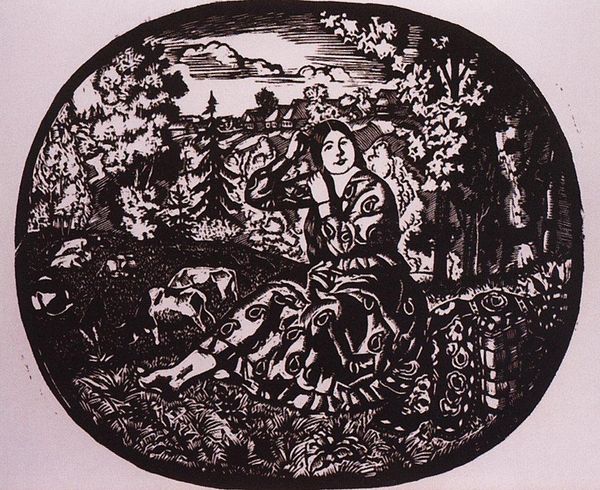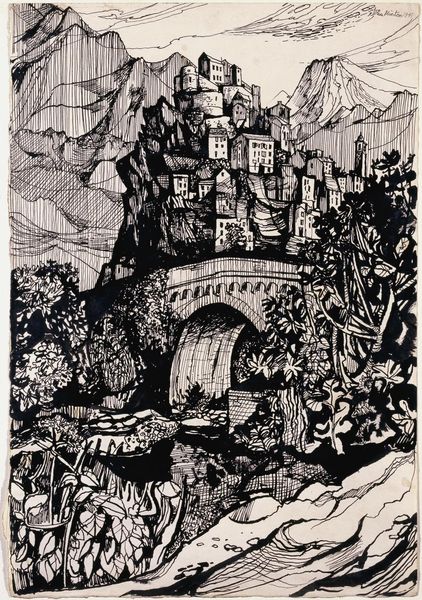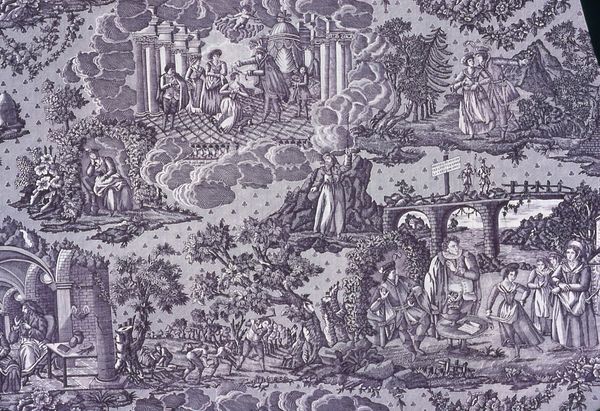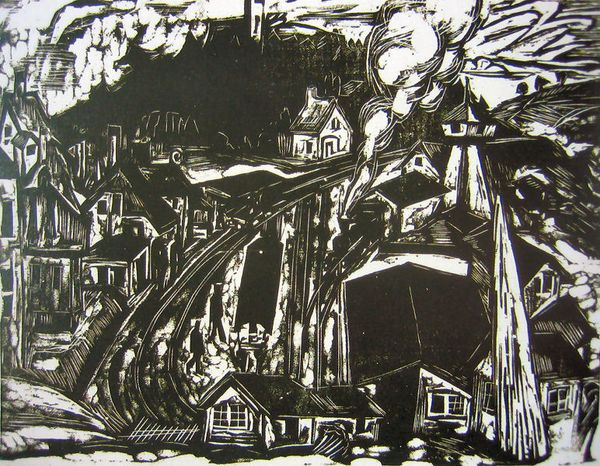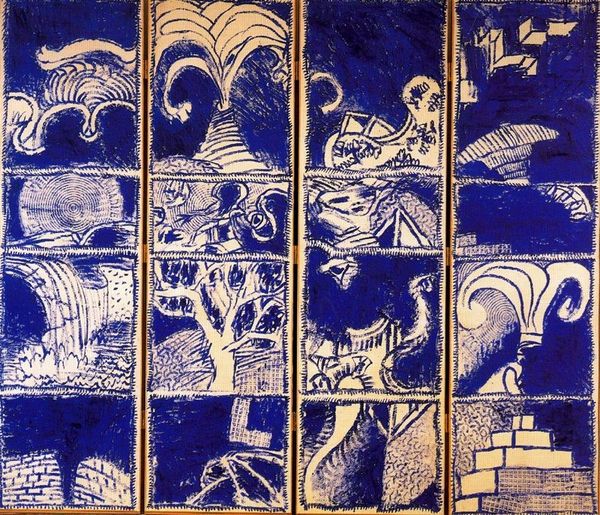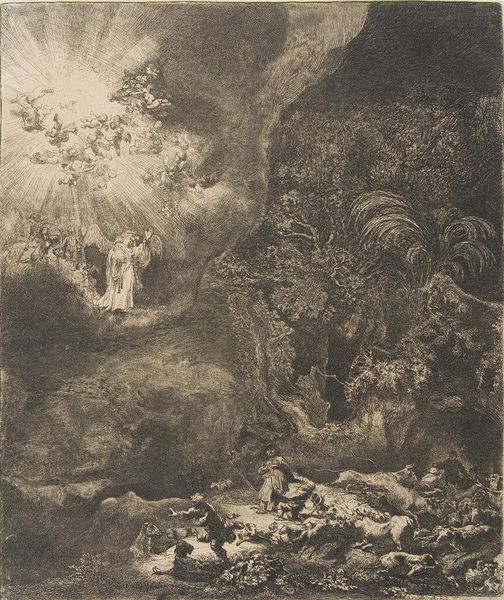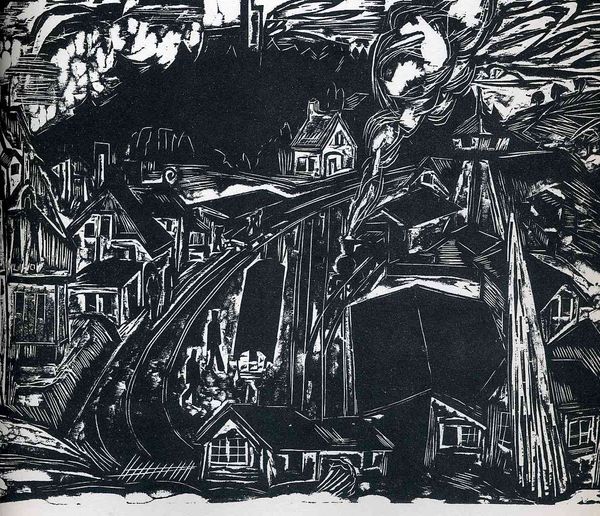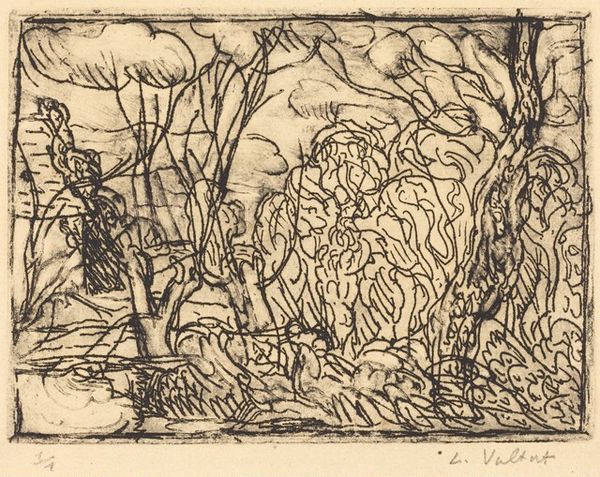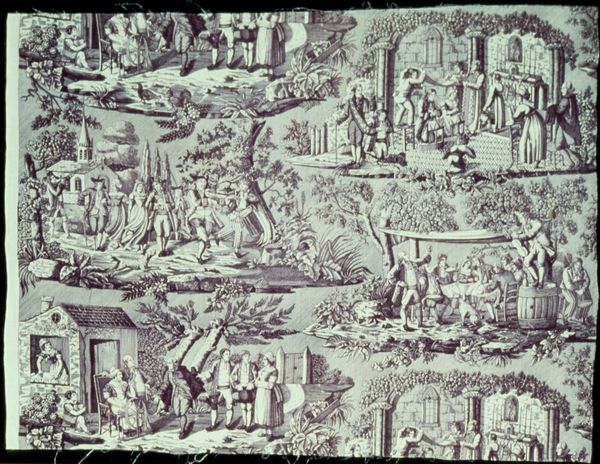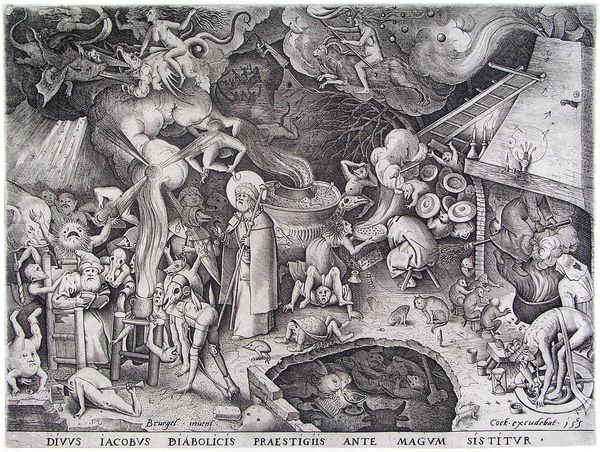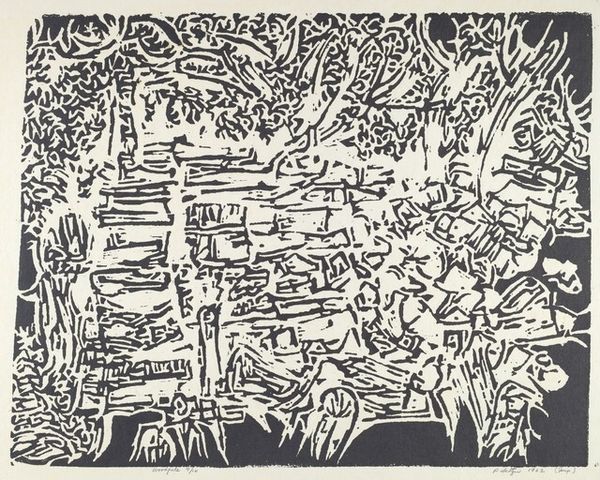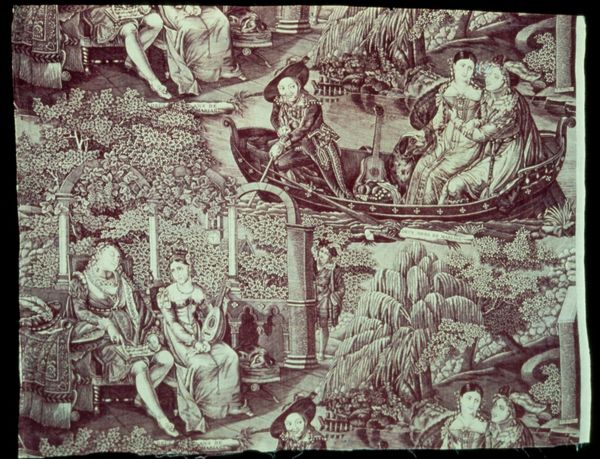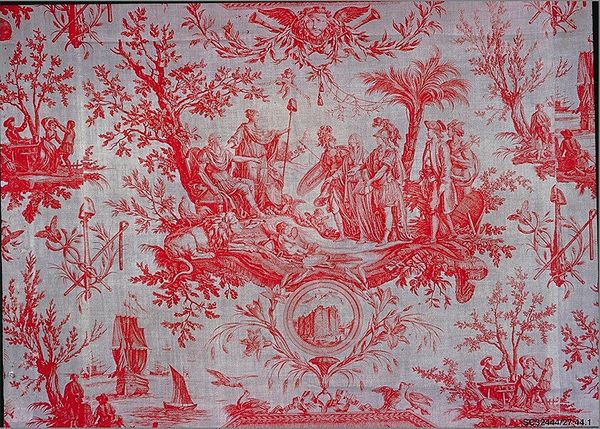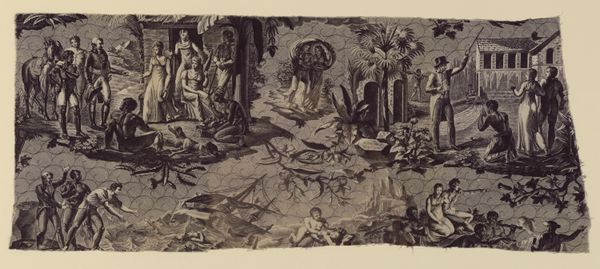
print, woodcut
#
tree
#
fantasy art
# print
#
landscape
#
house
#
figuration
#
woodcut
#
surrealism
#
russian-avant-garde
#
genre-painting
#
street
#
realism
#
building
Copyright: Public domain
Curator: This captivating woodcut is entitled "Fair in the Village," created by Boris Kustodiev in 1927. It really encapsulates the spirit of a bustling marketplace. Editor: My immediate reaction is one of organized chaos. It’s dark, full of contrasts. Despite the activity, the high-contrast printmaking creates a somewhat somber atmosphere. Curator: Kustodiev, working in the post-revolutionary period, was deeply interested in documenting Russian folk life. The fairs, with their vibrant energy and social interaction, provided him with rich subject matter. We see that spirit in the Russian avant-garde movement reflected here too. Editor: Definitely, there’s that element of tradition, but also hints of societal upheaval. Look at the central church and the vendors alongside the houses—a real cross-section of village society coexisting, but also maybe struggling, as older institutions encounter the new reality of Soviet life. What's the meaning of that dark, celestial rainbow? Curator: That is interesting, isn't it? His previous works like the Merchant's Wife have explored a more whimsical and exaggerated representation of life, whereas this piece holds a grounded and possibly socio-political realism. But looking at his biography, a large portion of his work was done while he battled severe tuberculosis which paralyzed his lower body—he was trying to recapture the memories of Russia as it was. It is both memory and maybe dream or wish? Editor: And I read the fair was essential to social fabric. Despite Soviet control, the rural folk needed connection and exchange, forming the collective in these public spheres. The visual noise speaks volumes, don't you agree? It's a story of community building outside political power—in the day to day commerce. Curator: Exactly. It reminds us of how cultural practices persevere even under oppressive circumstances. We can't ignore how woodcut allowed his folk style to translate effectively at an affordable price in print. What may seem like chaotic composition may really signal a powerful form of historical resistance. Editor: I now have new insight to its function and effect on viewers across a century—Kustodiev's artwork acts as more than just the "folk spirit." The visual layering shows what this fair as a meeting place really provides.
Comments
No comments
Be the first to comment and join the conversation on the ultimate creative platform.
